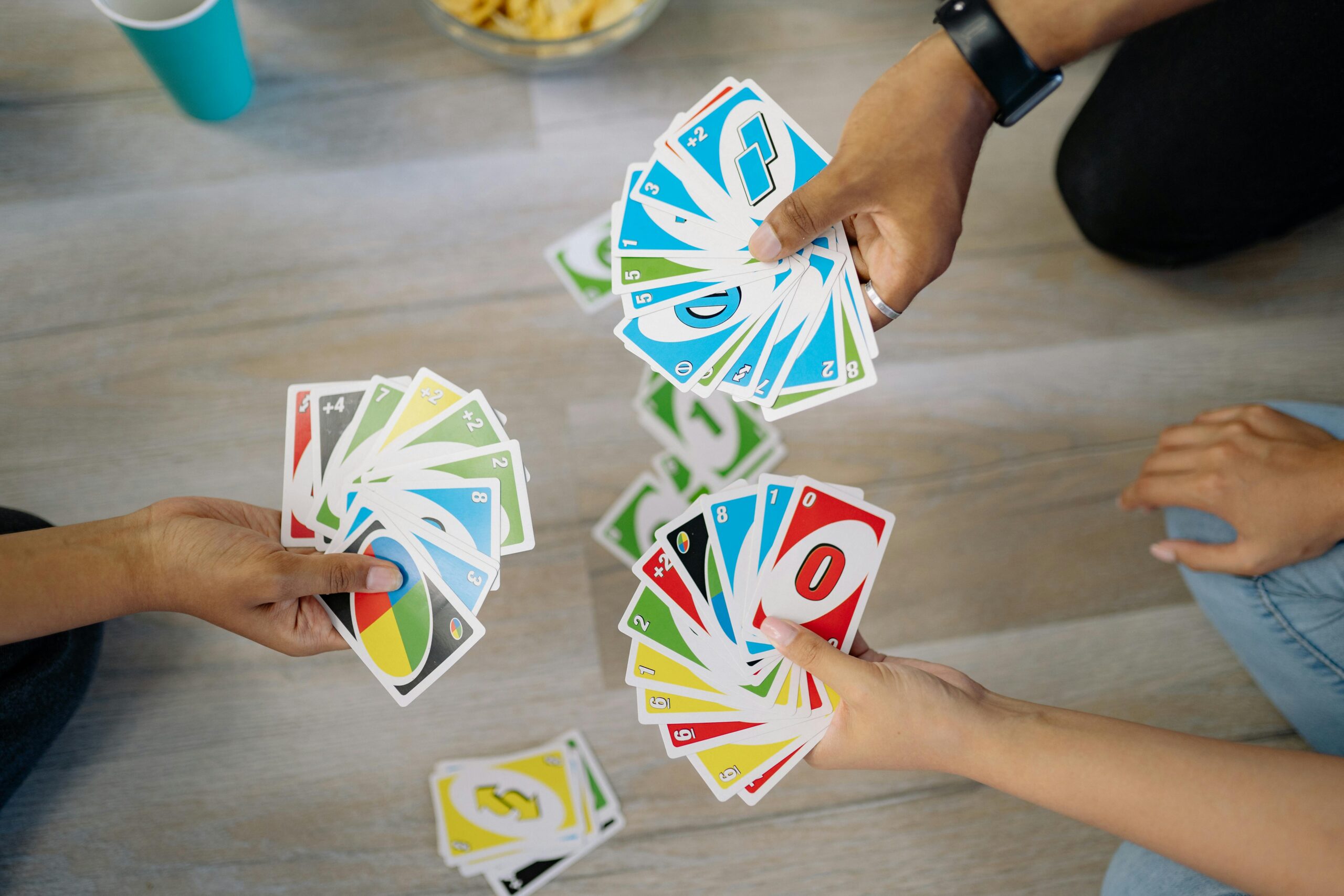Introduction
UNO is one of the most iconic card games ever made, simple, colorful, and endlessly replay able. But during one of my client projects, I faced an interesting challenge:
“Can you make UNO faster, simpler, and still fun, all within 10 minutes?”
At first, that sounded impossible. The standard UNO game lasts around 25–35 minutes, depending on player count and luck. My task was to redesign the core system while keeping the familiar fun, tension, and laughter that make UNO timeless.
This is the story of how I used:
- Design Thinking
- Creative Solution
To optimize UNO for a faster, modern play experience.
Step 1: Defining the Design Constraints
The client’s requirements were clear:
- Maximum 4 players
- Game duration under 10 minutes
- Simplified gameplay
- Faster pacing without losing fun
- Avoid IP infringement
I treated this like a product optimization task, not a redesign from scratch, but a careful rebalancing of mechanics, components, and probabilities.
Step 2: Analyzing the Original UNO System

In standard UNO, the deck has 108 cards divided across four colors (red, yellow, green, blue).
Each color contains:
- Number cards (0–9)
- Special cards: Reverse, Skip, Draw Two
- Plus Wild and Wild Draw Four cards
This structure gives UNO depth, but also creates drag:
- Players often draw too many cards
- Turns take longer
- Pacing fluctuates heavily depending on luck
Average match time: 25–35 minutes
Step 3: Identifying Bottlenecks in Play Speed
From observation and playtesting, these were the main pacing issues:
- Too many colors → lower probability of matching color (25% per color).
- High card count → more time for setup and hand management.
- Wild Draw Four → frequent stalling moments where players wait and reset.
- Frequent color switches → break player momentum.
The goal became clear: increase matching probability and reduce gameplay interruptions.
Step 4: Designing the Optimized UNO Deck
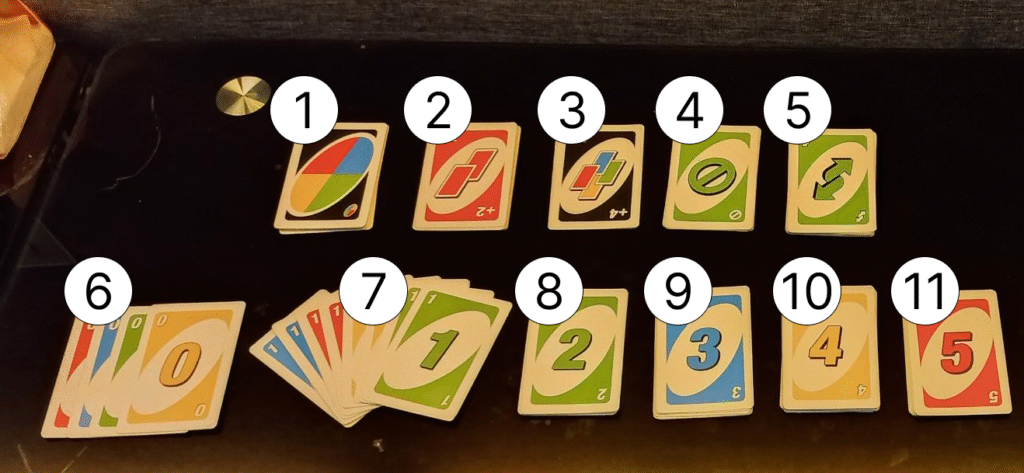
To achieve faster flow, I created a simplified two color system (Red and Blue). This alone doubled the color match probability from 25% → 50%, ensuring fewer forced draws and more active discards.
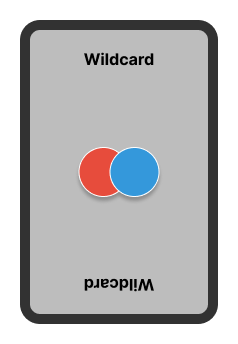
Then I adjusted the deck composition for simplicity and pacing:
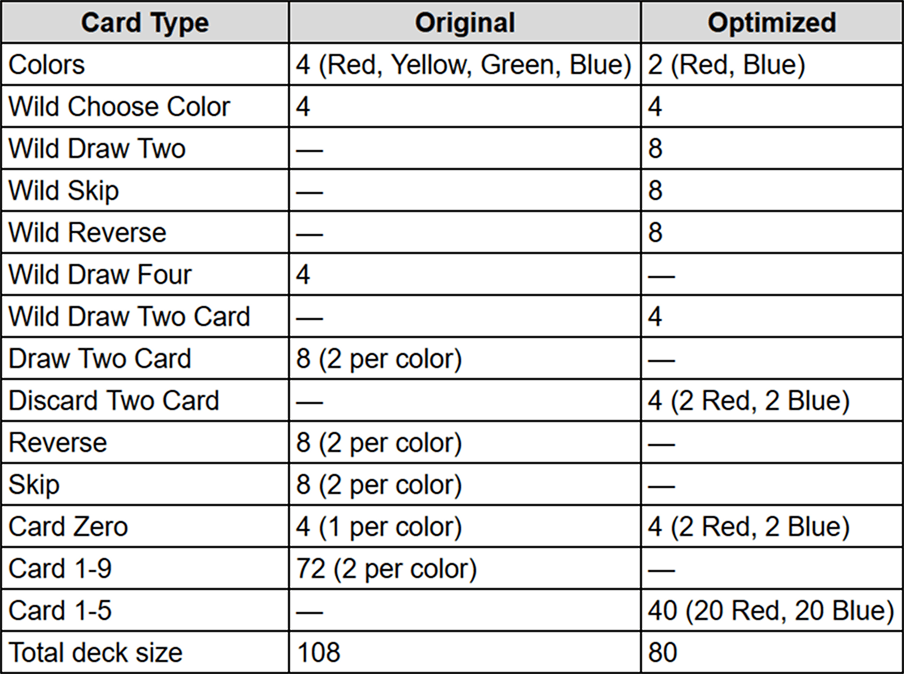
Newly optimized deck and redesigned card layout:
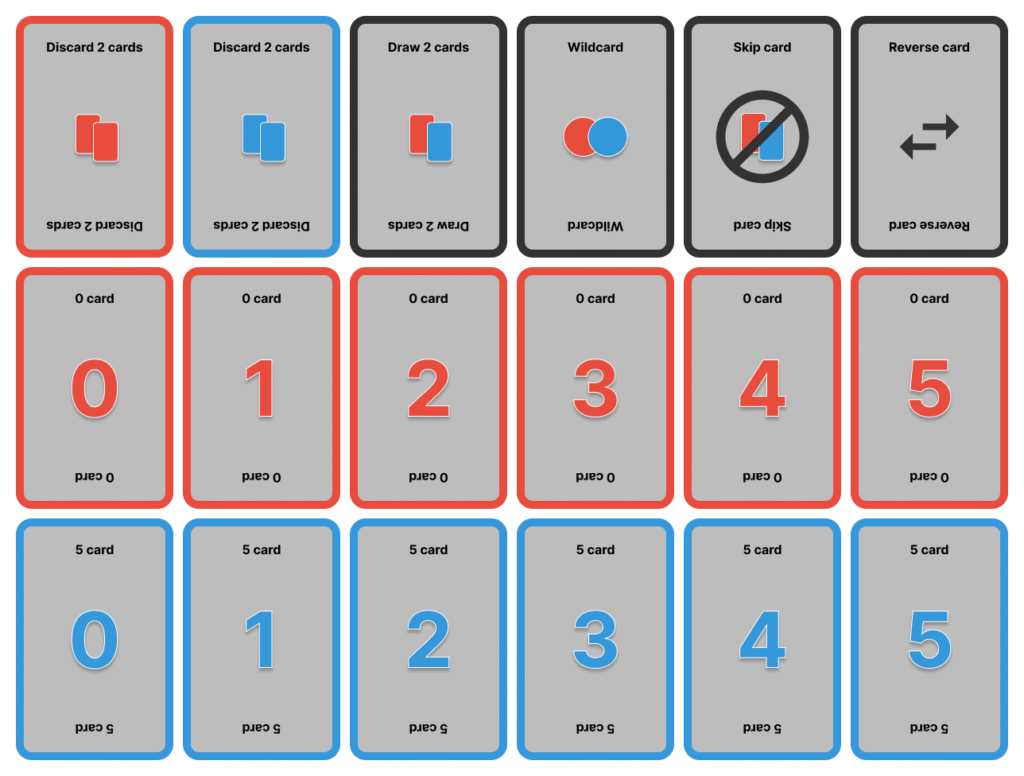
Step 5: Introducing a New Mechanic
The key innovation was a new card mechanic that speeds up discarding.
Discard 2 cards:
- A player may discard 1x Discard 2 + 2 additional cards of the same color in one turn (total 3 cards).
- Or discard the Discard 2 card alone, as usual, to continue the turn
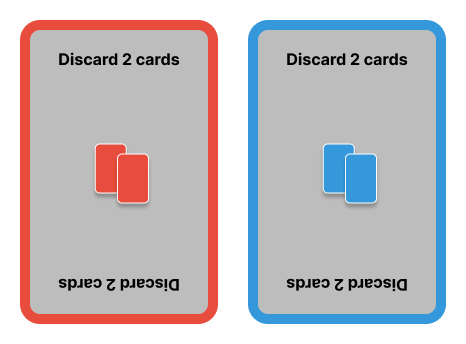
This mechanic rewards strategic hand management and introduces a light combo system, enabling burst turns that cut down playtime dramatically.
Step 6: Testing and Results
I tested the optimized version with two groups of four players, all experienced in standard UNO. Each player received six cards.

Players described the new UNO as:
- “Feels like a new game, but still UNO.”
- “Fast, competitive, and addictive.”
- “We played for an hour without realizing it, it was that fun!”
When the digital version of this game was published, the client used a different name to avoid IP infringement.
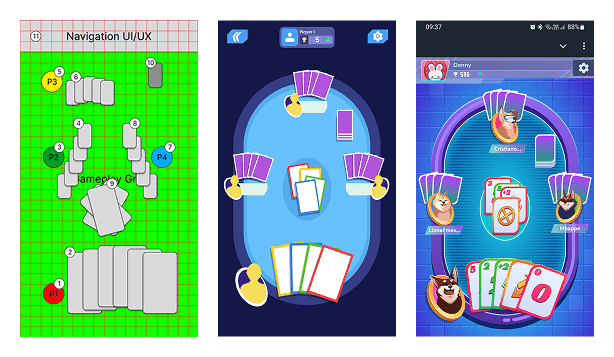
Step 7: Reflection and Learnings
Through this experiment, I learned that speed optimization in game design isn’t just about removing elements, it’s about adjusting probabilities, reducing friction, and amplifying momentum.
By simplifying color diversity and adding controlled combo mechanics, I created a version of UNO that:
- Encourages continuous engagement
- Reduces waiting time
- Increases laughter and replay value
This project also reinforced a key design principle I often apply in digital games:
Fun = flow × frequency of meaningful actions
When players are in flow, with frequent, rewarding turns, time disappears.
Conclusion
Optimizing UNO was more than a card experiment, it was a case study in balancing simplicity and excitement. By reducing friction and rethinking card logic, I turned a 30 minute experience into a 5 minute, fast paced social challenge, perfect for quick sessions or casual breaks.
This approach can apply to any product or game:
